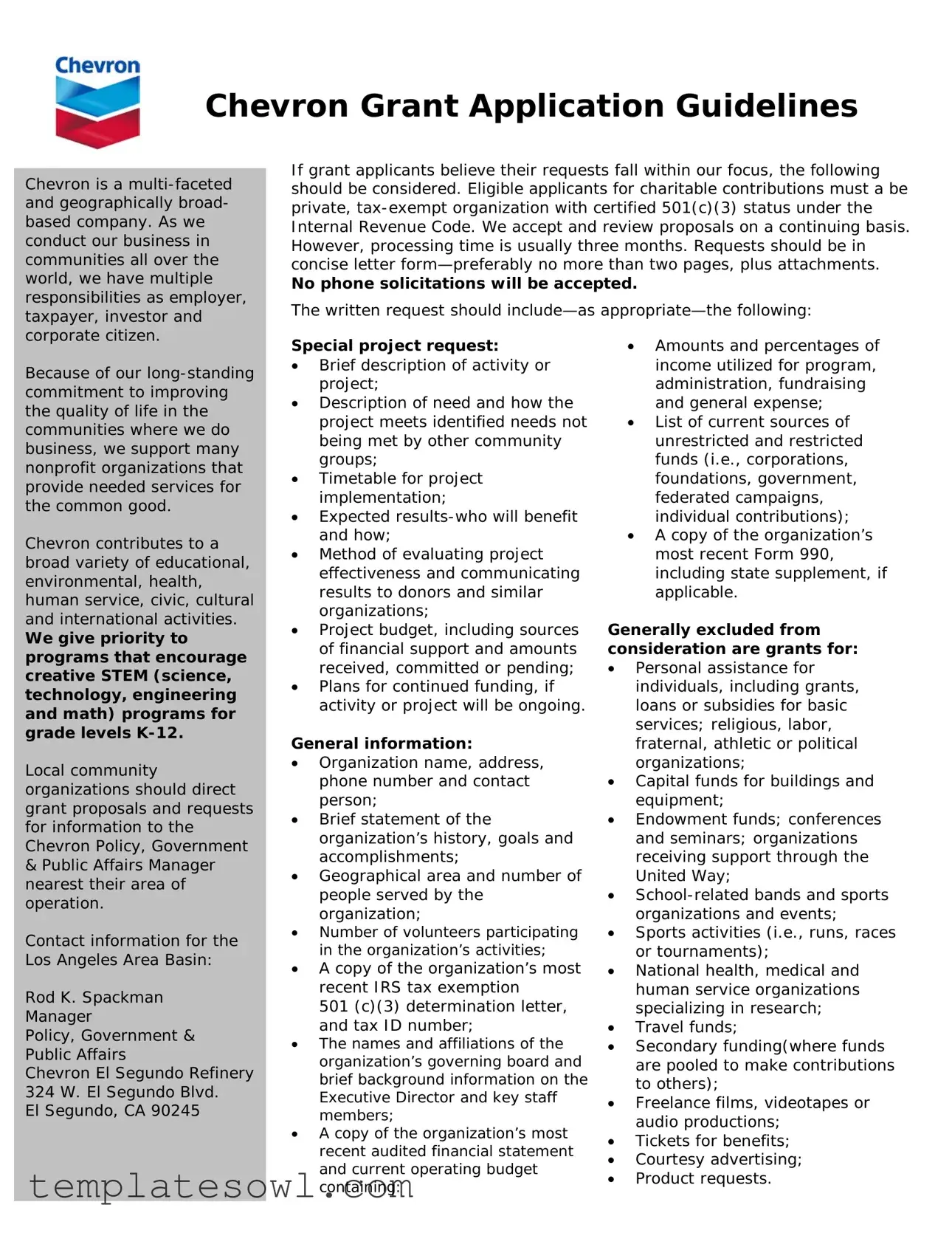What types of organizations are eligible to apply for the Chevron Grant?
Eligible applicants must be private, tax-exempt organizations that possess certified 501(c)(3) status under the Internal Revenue Code. This classification demonstrates the organization’s commitment to charitable purposes, making it a key requirement for grant consideration.
How does the grant application process work?
The proposal submissions for the Chevron Grant are accepted and reviewed on an ongoing basis. However, please note that the processing time typically spans three months. Therefore, applicants should prepare their requests with enough time to accommodate this timeline.
What should be included in the grant request letter?
A grant request should ideally be a concise letter, no more than two pages in length, complemented by any necessary attachments. The letter should clearly articulate the organization’s purpose, the specific needs the project addresses, and provide a comprehensive project budget. Details about the intended beneficiaries and methods for evaluating project effectiveness should also be included.
What projects does Chevron prioritize for funding?
Chevron places a strong emphasis on initiatives that enhance the quality of life in communities. The company particularly prioritizes projects that foster creative STEM (science, technology, engineering, and math) programming for K-12 students. This focus reflects Chevron’s commitment to educational advancement and community development.
Who should local organizations contact for grant proposals?
Local community organizations are encouraged to direct their grant proposals to the nearest Chevron Policy, Government & Public Affairs Manager. Each area of operation has a designated manager, ensuring that requests are handled with local expertise and attention.
What information is necessary about the organization in the grant application?
Applicants must provide essential organizational details, such as the name, address, and contact person. A brief statement outlining the organization’s history, goals, and accomplishments is crucial. Additional information such as the geographical area served, the volunteer involvement, and the organization’s governing board is also required for a complete application.
Are there specific exclusions from grant funding?
Yes, certain types of requests are generally excluded from consideration. These include grants for personal assistance for individuals, capital funds for buildings, religious or political organizations, and travel funds. Organizations seeking support for athletic events or national health institutions focusing on research should also refrain from applying.
What type of financial information must accompany the application?
Organizations need to submit their most recent audited financial statements and current operating budgets. This documentation should outline how income is allocated across various expenses, and it should list all current funding sources, both unrestricted and restricted. Additionally, a copy of the organization’s latest Form 990, including any applicable state supplements, is required.
Is there a preferred format for submitting the grant request?
The grant request should be written in a clear and concise letter format, ideally not exceeding two pages, excluding attachments. This format ensures that all necessary information is presented in an organized manner, facilitating the review process by Chevron’s grant committee.
Can I contact Chevron by phone regarding my grant application?
No, phone solicitations are not accepted. All grant inquiries and submissions must be made in writing, allowing Chevron to maintain a consistent and thorough review process for all applications received.

